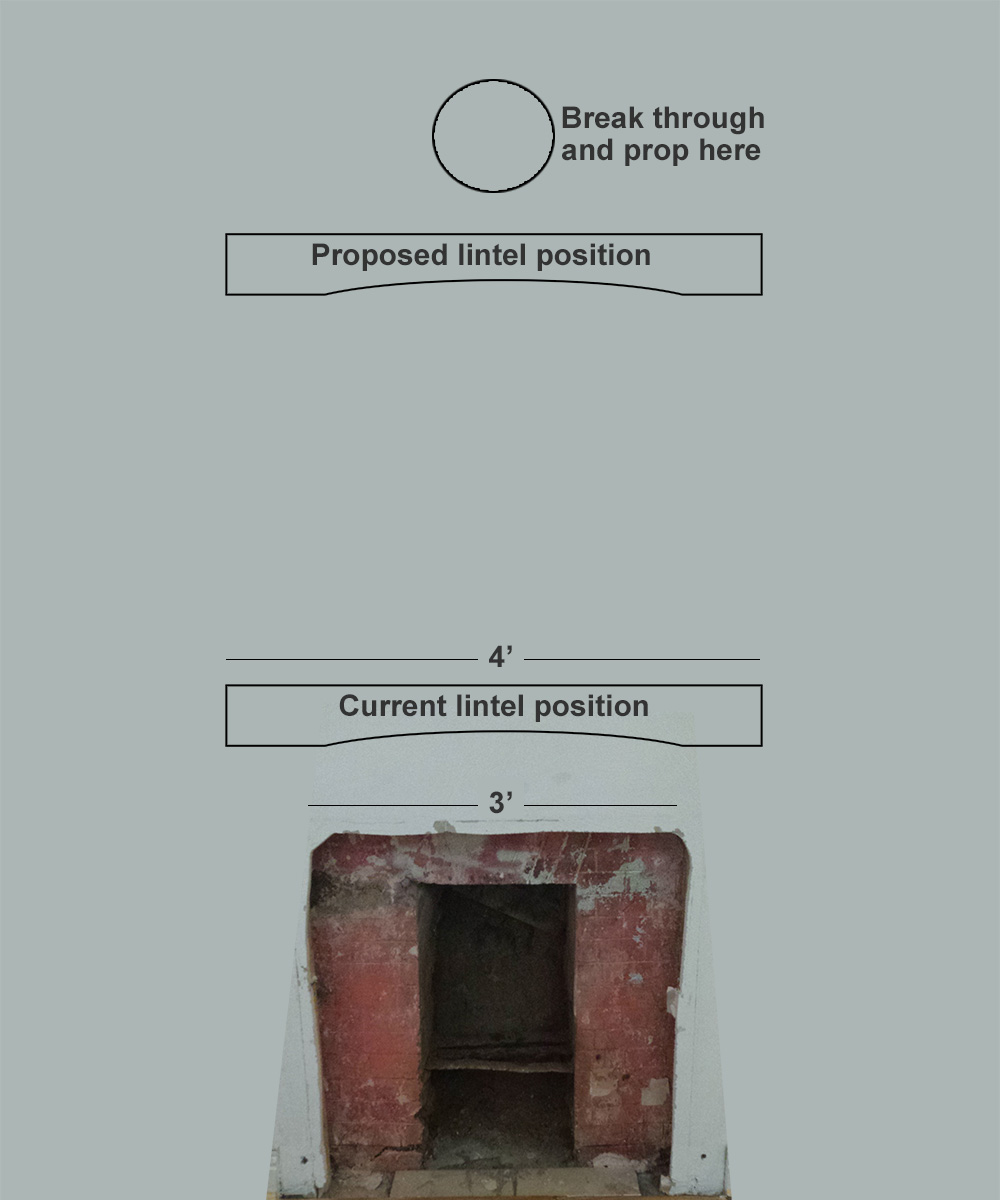We want to put a doorway through a rubble/stone wall where there's currently an old fireplace. I'm planning to start by moving the chimney breast lintel up to the height of a doorway. I'm going to break through the chimney breast just above the final height of the lintel, prop the chimney breast by putting a needle (4" x 4" propped timber) through the hole, then dismantle the wall below, then move the lintel up to the new position and concrete it in place.
Is this the right way to go about the job? the lintel is about 4' wide, will a single needle be enough? I've read that every 2' is sufficient for propping. Anything else I should watch out for? And yes, I know it will be messy
Is this the right way to go about the job? the lintel is about 4' wide, will a single needle be enough? I've read that every 2' is sufficient for propping. Anything else I should watch out for? And yes, I know it will be messy








